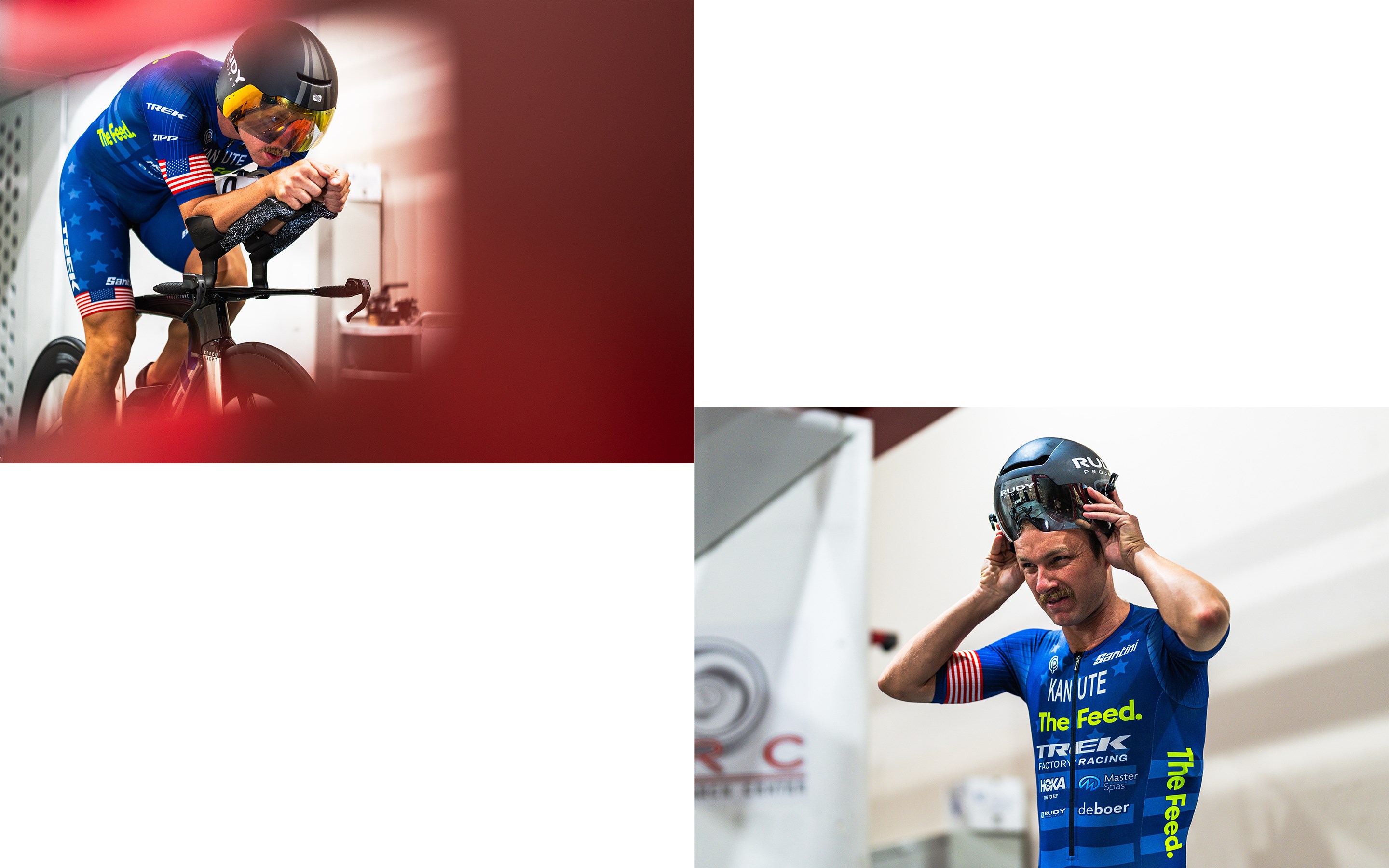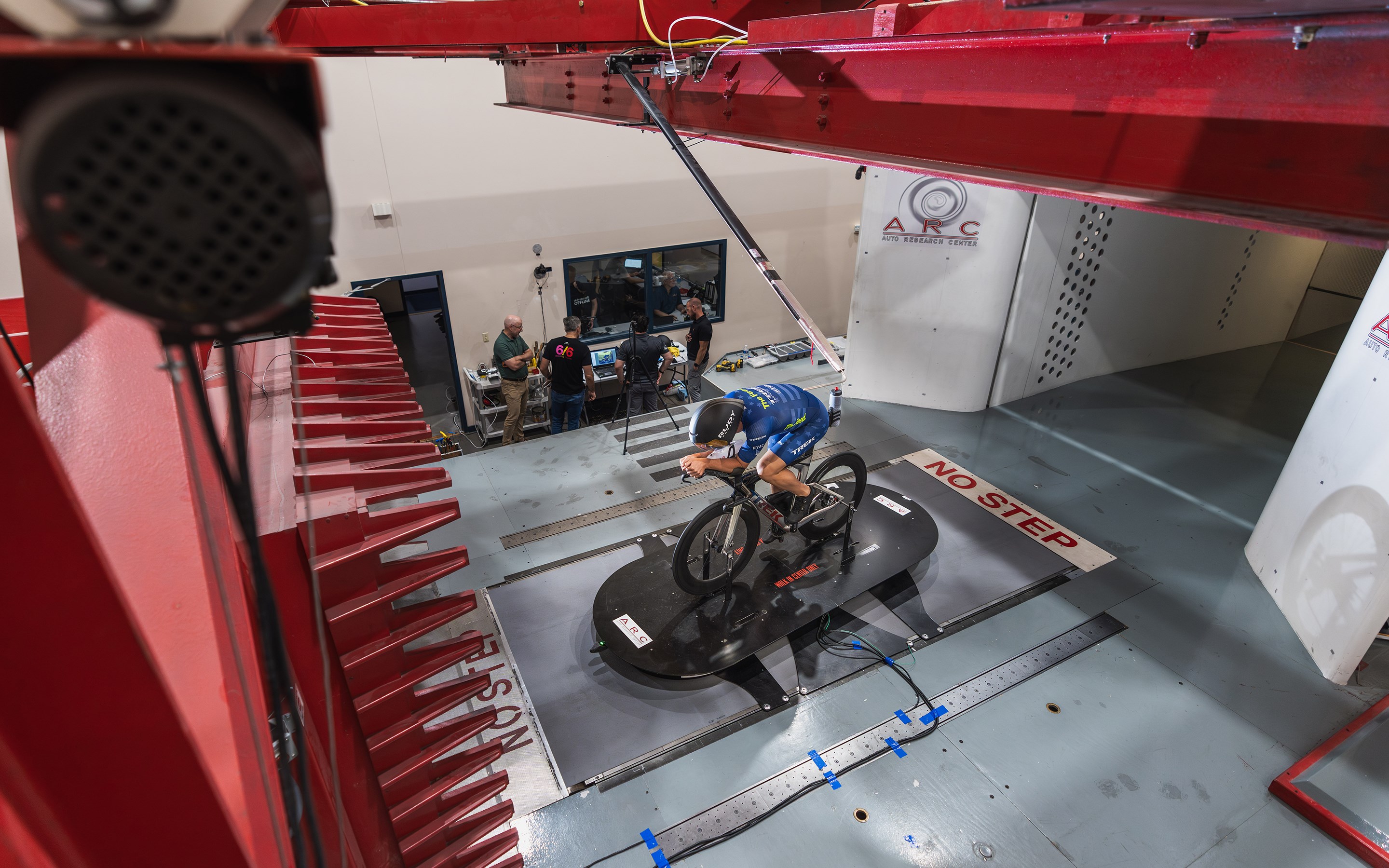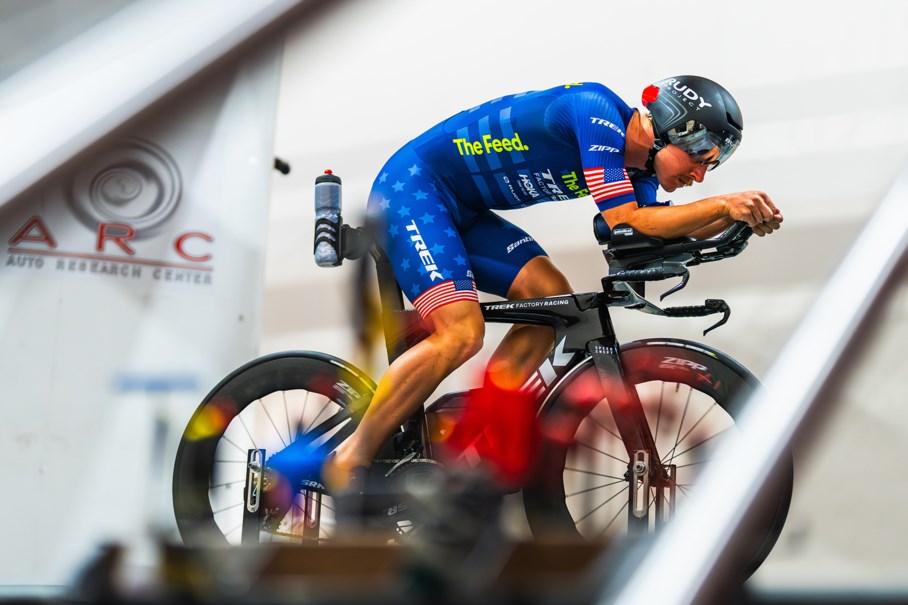Supply and Demand
Pro Triathlete Ben Kanute’s Data-Driven Approach to his first Kona
Pro triathlete Ben Kanute realized you can study much more than wind in a wind tunnel. To truly become faster on the bike (and the run that follows), you must understand how many small decisions affect the bike and rider aerodynamically but also physiologically.
To that end, Kanute gathered recently in Indianapolis with renowned bike fit and biomechanics expert Paraic McGlynn and a team of Zipp engineers at the ARC Wind Tunnel. The goal was to examine just about everything on the bike—rider position, hydration, helmet, socks—for optimal setup for October when Kanute completes in his first Ironman World Championship in Kona.
In cycling and triathlon, almost everyone knows about marginal gains. Small increases in efficiency save a watt here or there. Kanute’s approach is more comprehensive and innovative, bringing together aspects of cycling science that too often operate in isolated spheres.

Think of it this way: Cycling has its own sort of law of supply and demand. The rider is on the supply side, pumping out the watts, and the bike on the demand side, requiring sustained power to maintain speed. Different events have varying requirements to balance supply and demand. For a 40 km time trial on a calm morning, a rider may put up with an almost all-aero approach with no water bottle. The athlete needs a more holistic approach for an Ironman in sweltering heat to supply sustained power. Look at the total equation.
“In many ways, it’s easy to reduce drag. It’s difficult to reduce drag without causing any breathing issues, taking a good hydration and nutrition strategy into account. We try to take a holistic, balanced approach to finding performance differences,” said McGlynn, founder and chief technologist of Cyclologic in Scottsdale, Arizona. “Kona, by virtue of its location and radiant heat, the wind, and the dynamics of Kona, I would say it’s between 15 and 20 percent harder than any other similarly distanced event.”
Our goal today was finding better aerodynamics while increasing comfort and making sure ventilation and breathing mechanics are good.
–Paraic McGlynn, founder and chief technologist of Cyclologic in Scottsdale, Arizona
Positioned atop his bike in the ARC tunnel, Kanute faced a 30 mph (48 kph) wind at varying angles, from -10 to +10 degrees yaw. “That way, we get the drive and non-drive sides because you can see some of that variation,” Zipp Senior Design Engineer John Leachman said.
McGlynn stood near Kanute, his laptop screen showing data fields. McGynn looked at factors including Kanute’s torso angle, breath rate, heart rate, and heart-rate variability (HRV). “As a rider fatigues, the HRV number goes down,” he noted. “They’re not riding very hard, but it’s very mentally demanding and very stimulating.”
As a result of the testing, Kanute adjusted his cockpit significantly higher, by about 3 cm on the front-end elbow pads with the extensions at a more extreme angle by about 15 degrees. The goal was more comfort for sustained wattage. He had progressively lowered his bars to a more aggressive position before rethinking that approach as he analyzed the wattage required over the grueling 112-mile course on Kona’s Queen K.
“Comfort for an Ironman is huge, especially for Kona,” Kanute said. “You have to be able to digest all the calories and take in all the fluids. So having that extra comfort is big. One of my goals today is to see how high we can go (with the aero cockpit) and how much is that going to cost us.”
The team also tested TT vs. road helmet, aero socks, aero extensions, and different placements of bottles on the bike. For example, a road helmet may feel cooler but comes with hefty aero price tags of about 20 watts in 0 degrees wind.

In total, McGynn and the Zipp team made suggested changes, resulting in about 10 watts of savings. As for wheels, Kanute is planning to stick with the Zipp 858 NSWs for their deep rims with crosswind stability.
Between wind-tunnel sweeps on the bike, Kanute walked around the control room, glancing at computer screens and asking McGlynn and the Zipp engineers questions. He realized that Kona is an ultimate individual testing ground but also requires a team.
“How many people do we have in the room? It makes my job easier because I don’t need to think about all those little choices – it gives me a simplified version,” Kanute said. “Air does funny things. Until you’re in the wind tunnel testing it, you’re guessing a little bit.”
With a data-based race plan, Kanute hopes to breathe a bit easier on the Queen K in October.
Watch for more from Zipp on American Ben Kanute, a 2016 Olympian, as he prepares for and competes in his first Kona championship.
All photos © Jake Rytlewski
